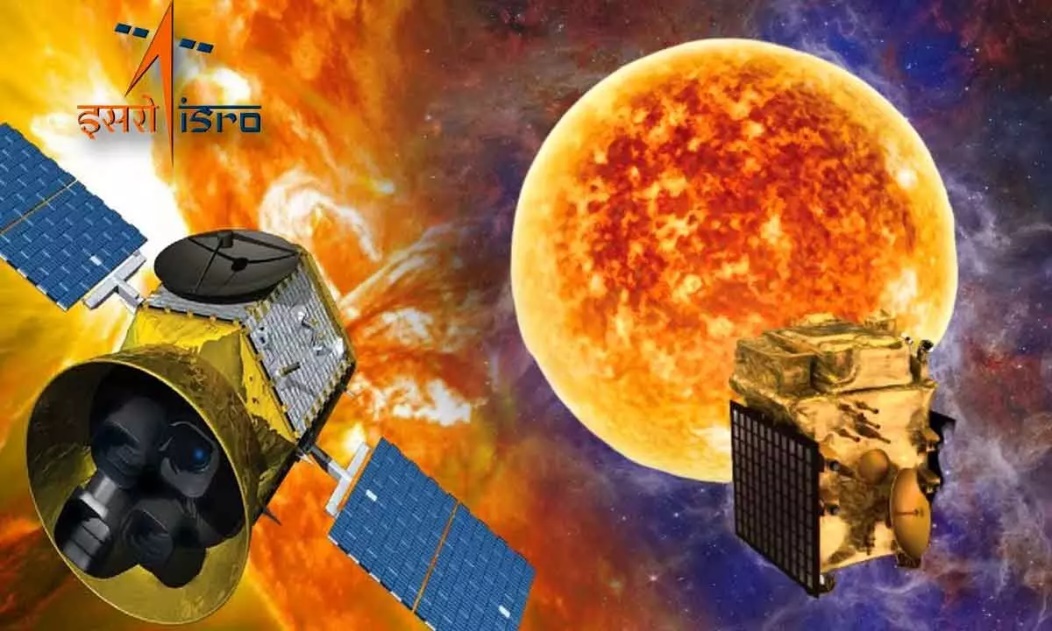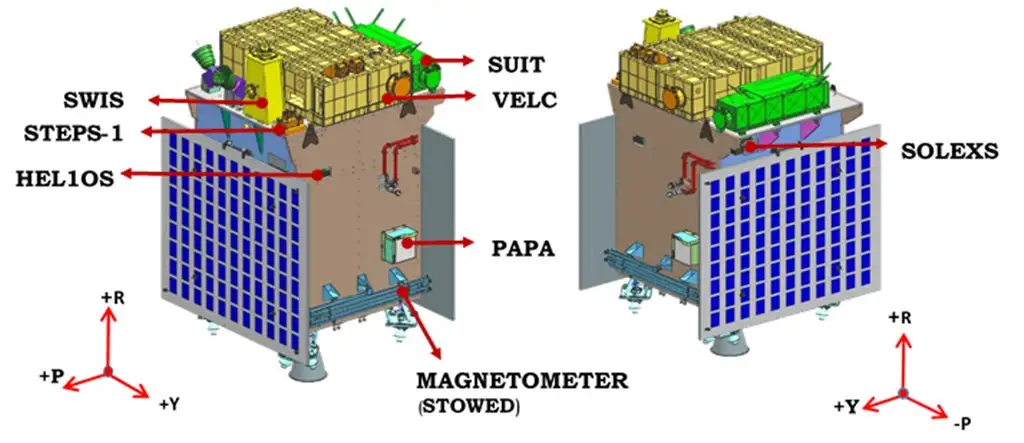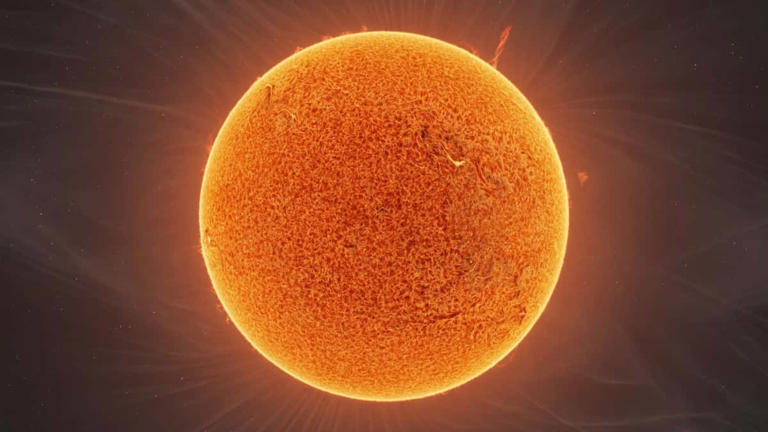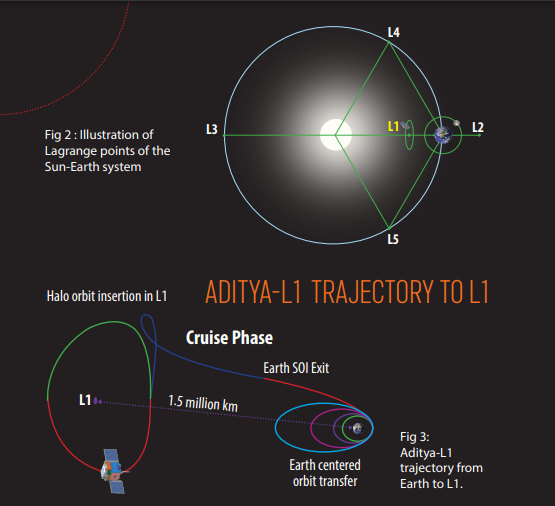
Aditya L1 Mission
Aditya L1 is India's first space-based observatory mission to explore the sun's mysteries.

- Launch date: September 2, 2023
- Launch from: Sriharikota
- Distance: 1.5 million km from Earth, about 4 times farther than the Moon.
- Total travel time from launch to L1: about 4 months
- Destination: Lagrange Point (L1) is one of five locations where objects tend to remain put after being sent. The centripetal force necessary for a small object to move with two large masses precisely equals that force at Lagrange Points. The "SOHO" satellite is currently based at L1 point, which provides a continuous view of the sun.
- Spacecraft: The spacecraft will use electromagnetic, particle, and magnetic field detectors to study the photosphere, chromosphere, and outermost layers of the Sun (corona). It will be launched using a PSLV XL rocket. The spacecraft will transport seven scientific payloads, more than twice as light as the one to the Moon.
- Route: After exiting Earth's gravitational Sphere of Influence (SOI), the spacecraft will enter the cruise phase and subsequently be injected into a large halo orbit around L1. It will collect data for a period of five years.
What is the objective of the mission?
- To get a better knowledge of the nearest star to us and how its radiation, heat, particle movement, and magnetic fields influence us.
- The mission's payloads will investigate the Sun's highest atmospheric layers, known as the chromosphere and corona. They are going to study the coronal mass ejection (CME), which is the release of plasma and magnetic fields. The magnetic field of the corona, as well as the causes of space weather, will be examined.
- Importantly, it may shed light on a long-standing mystery: why the Sun's corona is a million degrees Celsius but the temperature on its surface is only approximately 5,500 degrees Celsius.
- It will also help in understanding the causes of particle acceleration on the Sun, which results in solar winds.
- The VLEC has mechanisms that obstruct bright visible light so that it can only detect light from the corona. It will use incredibly brief exposures of just 5 milliseconds to study the corona.
|
What are the Lagrange points? The Lagrange Points are the positions in space where a tiny item prefers to stay if placed in a two-body gravitational system. These places in space for two-body systems such as the Sun and Earth can be utilized by spacecraft to remain in these positions while using less fuel. Technically, the gravitational attraction of the two huge masses equals the centripetal force required for a tiny item to travel with them at Lagrange Point. There are five Lagrange points in a two-body gravitational system, labeled as L1, L2, L3, L4, and L5. |
L1 point : Significance
Lagrange Point 1 (L1) is a stable gravitational position between two massive bodies, like a planet and a moon. Objects at L1 remain relatively stationary in relation to these bodies. L1's significance lies in:
- Observatories: Placing telescopes like the James Webb Space Telescope at L1 enables continuous, unobstructed views of space, free from Earth's atmosphere.
- Solar Study: Instruments at L1 monitor the Sun without Earth's day-night cycle interference, aiding solar research and space weather prediction.
- Communication: L1 is ideal for communication satellites, ensuring uninterrupted connections between Earth and distant space missions.
- Early Warning: It allows monitoring of solar activities, aiding in space weather forecasts and protecting technology.
- Astronomy: L1 permits clearer observations of celestial events by avoiding atmospheric distortion.
- Interplanetary Missions: L1 serves as a low-energy launch point for missions exploring different orbits of celestial bodies.
The 7 Payloads of Aditya L1
- Visible Emission Line Coronagraph (VLEC)
- Developed by the Indian Institute of Astrophysics.
- Explore the solar corona from the bottom up.
- Scans the solar corona down to 1.05 times the solar radius.
- Closest imagery of this kind to date.
- Solar Ultraviolet Imaging Telescope (SUIT)
- Created by the Inter-University Centre for Astronomy and Astrophysics (IU-CAA).
- Captures UV images of the solar photosphere and chromosphere.
- Aids in the study of variations in light energy output.
- Solar Low Energy X-ray Spectrometer (SOLEXS) and High Energy L1 Orbiting X-ray Spectrometer (HEL1OS)
- Developed by the UR Rao Satellite Center.
- Analyzes X-ray flares emanating from the Sun.
- Aditya Solar Wind Particle Experiment (ASPEX)
- Investigates solar wind and energetic ions.
- First payload crafted by ISRO's Physical Research Laboratory.
- Plasma Analyzer Package for Aditya (PAPA)
- Developed to study solar wind and energetic ions.
- Second payload designed by ISRO's Vikram Sarabhai Space Centre's Space Physics Laboratory.
- Advanced Tri-axial High Resolution Digital Magnetometers - Measuring the magnitude and nature of interplanetary magnetic field.
What sets the mission apart?
- For the first time, a solar disc in the near UV band has been spatially resolved.
- CME dynamics near the solar disc (from 1.05 solar radius), give information in the CME acceleration regime that is not routinely seen.
- Intelligent on-board detection of CMEs and solar flares for optimal observations and data volume.
- Using multi-direction data, determine the directional and energetic anisotropy of solar wind.
Need of studying the sun from space
The Sun is the closest star to us, so it can be examined in more depth than other stars. Understanding the Sun can also help us comprehend other stars. While the Sun is essential to all life on Earth, it also possesses a number of explosive occurrences. These have the potential to harm our satellites and communication infrastructure. The study of the Sun could help provide early warnings for such disasters.
The Sun experiences a wide range of extremely powerful thermal and magnetic phenomena. Because of this, the Sun acts as a good natural laboratory for comprehending them, which cannot be directly examined in the lab. The study of the Sun from space is vital because the Earth's atmosphere and magnetic field operate as protective shields, blocking off dangerous radiation such as UV rays. As a result, observing the Sun from Earth does not offer a comprehensive picture.



